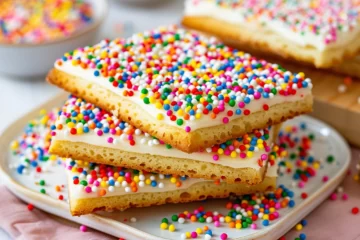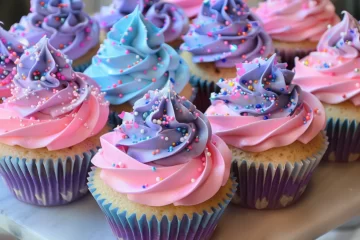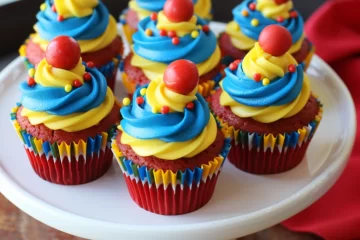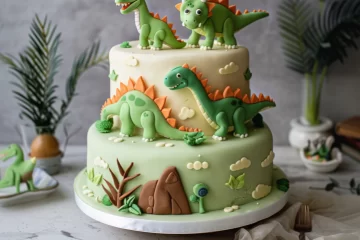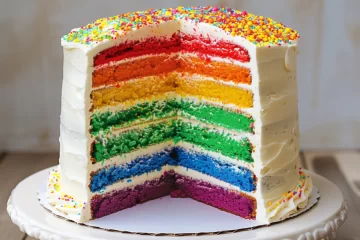Guide to Making Money from a Food Blog Part Two: Essential Tools and Equipment for Every Food Blogger
As you dive deeper into the world of food blogging, having the right tools and equipment can significantly enhance the quality and appeal of your content. Whether you’re whipping up recipes or snapping that perfect shot, these essentials will help you produce professional-grade content that captures your audience’s attention:
1. Reliable Kitchen Tools: Start with good—quality knives, mixing bowls, measuring cups, and spoons. As you evolve, consider specialty items like mandolines for perfectly thin slicing, silicone baking mats for easy cleanup, and high-powered blenders for smooth sauces and soups.
2. Tech Gadgets for Cooking: Modern cooking often involves gadgets that simplify processes or improve your culinary results. Think of pressure cookers, sous vide machines or even a good food processor. These can speed up your cooking and allow you to experiment with new techniques.
3. Food Photography Equipment: The right photography equipment can take your blog from amateur to professional. Invest in a good DSLR or mirrorless camera and learn how to use it. Pair it with prime lenses, such as a 50mm and a macro lens, which are great for food photography.
4. Lighting and Accessories: Natural light is best for food photography but is not always available. Softbox lights or ring lights can help illuminate your dishes beautifully. Reflectors and diffusers can also be invaluable for softening shadows and highlighting the textures of your food.
5. Tripod: A sturdy tripod is crucial for sharp, clear images, especially in low light or when shooting top-down (overhead) compositions. It also allows you to use both hands to style your food while shooting.
6. Editing Software: After taking your photos, editing them can enhance colors, adjust lighting, and crop images to focus on the best parts. Software like Adobe Lightroom and Photoshop are popular choices, but there are also more accessible options like Canva and Snapseed that offer great results.
7. Digital Note-Taking Tools: Digital tools can make keeping track of your recipes, posts, and schedules much easier. Apps like Evernote, Google Keep, or Microsoft OneNote can help you organize and access your ideas across all your devices.
8. Video Equipment: If you plan to blog or vlog, consider a good video camera or a smartphone with advanced video capabilities. A microphone will also improve the audio quality of your videos, and a gimbal or stabilizer can ensure smooth footage.
9. Blogging Software and Plugins: Beyond the basics, specialized plugins for recipe cards, SEO, social media sharing, and security can enhance your blog’s functionality and make it easier for readers to interact with your content.

By equipping yourself with these tools, you not only make the process of creating content easier but also enhance the quality and appeal of your blog. With the right tools in your arsenal, you’re ready to craft posts that will tantalize the taste buds and catch the eye, making your food blog a go-to resource for food lovers everywhere. Now, let’s master the art of food photography and styling to showcase your culinary creations truly!
Mastering Food Photography and Styling
Capturing the beauty and appeal of your culinary creations through photography is a crucial element of successful food blogging. Good food photography can make your recipes irresistible to viewers, encouraging them to read, share, and try making your dishes themselves. Here are some tips to help you master the art of food photography and styling:
1. Understand Lighting: Lighting is the most crucial aspect of food photography. Natural light works best, so set up your shooting area near a window. Avoid direct sunlight, which can be harsh and create unwanted shadows. If natural light isn’t available, use soft artificial lights. Remember, how you light your food can dramatically change how it looks.
2. Learn Composition and Framing: Composition in photography is how you arrange elements in the frame. Some famous compositions for food photography include the rule of thirds, leading lines, or framing your dish centrally for a more symmetrical look. Experiment with different angles—top-down for a neat, graphic look or side shots for dishes where you want to showcase layers or the height of the dish.
3. Style Your Food Thoughtfully: Food styling involves appealingly arranging your ingredients and final dishes. Use fresh ingredients for garnish, choose dishes and utensils that complement the food, and never overcrowd the plate. Sometimes, less is more. Pay attention to color contrasts and textures, and add small touches like a sprinkle of herbs to make your dishes pop.
4. Invest in Props and Backgrounds: Having a selection of props such as plates, cutlery, napkins, and cooking utensils can help enhance your food photography. Backgrounds are also important; use neutral colors that don’t distract from the food. Wood, marble, or simple textured cloths can work well as backgrounds.
5. Edit Your Photos: Post-processing is a powerful tool to enhance food photography. Adjust exposure, contrast, and saturation to make your photos look their best. Be careful not to over-edit; your food should look delicious and natural.
6. Practice Consistency: Your blog will look more professional if your photos have a consistent style. This doesn’t mean all images must look the same, but they should all convey your unique style and brand. This could be in how you compose your shots, your chosen color palette, or how you style your food.
7. Keep Learning: Photography is an art you can continually improve. Take the time to learn from other food photographers, attend workshops, or take online courses. Practice regularly and review your work critically to see where you can improve.

By enhancing your food photography and styling skills, you ensure that each post on your blog is visually captivating and beautifully presented. These visual elements attract and retain readers, making them eager to see what you’ll cook up next. Now, let’s talk about how to craft content that’s as compelling as your stunning photos!
Writing Mouth-Watering Content
Excellent food photography attracts your readers, but it’s the quality of your writing that keeps them engaged. Writing compelling content for your food blog involves more than just listing ingredients and directions; it’s about telling stories, sharing experiences, and conveying your passion for food. Here are some tips to help you write content that’s as mouth-watering as the dishes you’re featuring:
1. Start with a Hook: Your opening lines are crucial. Start with an anecdote, an interesting fact, or a question to draw readers in. Perhaps share a personal story about what makes a particular recipe unique to you or an unexpected discovery you made while creating it.
2. Be Descriptive: Use vivid language to describe your dishes. Talk about textures, colors, and flavors in a way that makes readers imagine tasting and enjoying the meal. Instead of simply saying “delicious,” describe how the crunch of a fresh vegetable contrasts with the softness of a well-cooked fish.
3. Share Your Expertise: Provide value in your posts by including cooking tips, explaining techniques, or discussing ingredient substitutions. This helps build your credibility and makes your blog a go-to resource for cooking advice.
4. Engage the Senses: Food is a sensory experience. Engage all the senses by describing the sizzle of a steak on the grill, the aromatic blend of spices in a curry, or the visually appealing array of colors in a salad. This makes your content immersive and engaging.
5. Include Personal Touches: Readers love to get to know the writer behind the blog. Weave in personal anecdotes, traditions, or family stories related to your recipes. This helps build a connection with your audience and adds a unique, personal layer to your blog.
6. Encourage Interaction: Ask questions at the end of your posts to encourage comments and interaction. Invite readers to share their experiences with the recipe or suggest twists. Interaction builds community and provides insights into what your readers enjoy and want more of.
7. Edit and Refine: Good writing is as much about revising as it is about creating. Before you publish, take the time to edit your post. Check for grammar and spelling mistakes, refine your language, and ensure your post is cohesive and flows smoothly.
8. Stay Consistent: Keep your voice and style consistent across your posts. This consistency helps create a recognizable personal brand. Whether you choose a casual tone or a more formal approach, ensure it reflects your personality and resonates with your audience.

Writing content that captivates your audience is crucial for the success of your food blog. By engaging your readers with beautifully crafted stories and valuable information, you can ensure they’ll keep returning for more. Now, let’s look into optimizing your blog for search engines to ensure eager readers can easily find your delicious content!
Optimizing Your Blog for Search Engines (SEO)
It would be best to optimize your food blog for search engines to reach a wider audience and make it more discoverable. SEO (Search Engine Optimization) might sound technical, but it’s about making your blog more attractive to search engines like Google. Here are some essential SEO tips to help your blog climb up the search rankings and reach more food lovers:
1. Use the Right Keywords: Keywords are phrases that potential readers use when searching for content like yours. Use tools like Google Keyword Planner or SEMrush to find relevant keywords for your recipes and culinary topics. Incorporate these keywords naturally into your titles, headers, and posts.
2. Optimize Your Images: Since food blogging is so visual, your images must also be optimized. Use descriptive file names and alt text for each image. This helps visually impaired readers understand what the image depicts and improves your site’s SEO.
3. Create Quality Content Regularly: Search engines favor websites that update regularly with high-quality content. Aim to post new, original, and engaging content consistently. This could be recipes, food reviews, or cooking tips—anything that keeps your audience coming back.
4. Improve Site Speed: A slow-loading blog can frustrate visitors and negatively affect your search engine rankings. Optimize your site’s loading speed by compressing images, minimizing the use of large files, and choosing a reliable web hosting service.
5. Use Internal and External Links: Link to other posts on your blog to keep readers engaged and reduce bounce rates. When relevant, link to reputable external sites, boosting your credibility and SEO. Similarly, getting external sites to link back to you (backlinks) can significantly improve your search rankings.
6. Optimize for Mobile: Make sure your blog is mobile-friendly, with more people using mobile devices to access the internet. This means your site should look good and function well on smartphones and tablets, which is also a factor that search engines consider for rankings.
7. Utilize Social Media: While social media doesn’t directly impact SEO, it increases your visibility and traffic, affecting your rankings. Share your posts on social media platforms, engage with your followers, and use hashtags to increase your posts’ reach.
8. Structure Your Posts Clearly: Use headings (H1, H2, H3) to structure your posts. This not only makes it easier for readers to follow your content but also helps search engines understand what your post is about. A clear structure can improve your chances of appearing in relevant searches.
9. Register Your Blog with Google Search Console: This tool allows you to see how your site appears in search results, what queries bring users to your site, and how effectively your site performs in Google Search. It’s invaluable for troubleshooting and further optimizing your site.

Implementing these SEO strategies can enhance your blog’s visibility and attract more readers. SEO is an ongoing process, so keep learning and adapting to the latest trends and guidelines. Next, in Part Three, we’ll explore how to build your social media presence to complement your SEO efforts and further boost your blog’s reach.
Kitchen Gear and Equipment We Use and Love
I just wanted to let you know that some of the links on this page are affiliate links. This means that if you click on these links and make a purchase, I may earn a small commission at no extra cost to you. Rest assured, I only recommend products and services that I personally use and love. Your support through these links helps me continue to create valuable content and keep this blog running. I appreciate your support!








